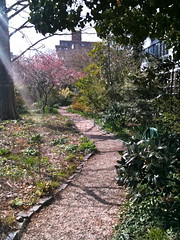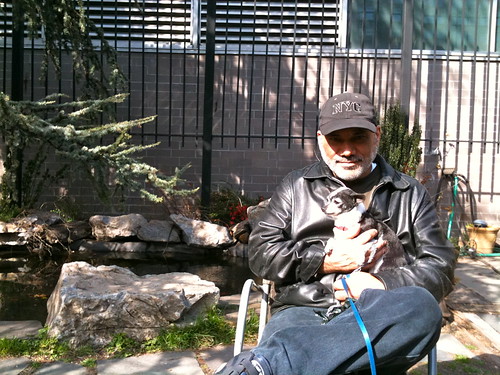There are 39 community gardens in the East Village, with one located on nearly every street between East Houston and 14th Street. Ranging from tiny outdoor nooks overflowing with tulips to wide double lots large enough to hold amphitheaters, the gardens offer welcomed botanical getaways from the grit of the city.
But today, urban green spaces face a new threat as lawmakers in Washington D.C. continue to mull over budget cuts to federally funded community development programs including Green Thumb, which provides New York City community gardens with workshops, tools and other necessary supplies.
“Unfortunately, it’s a possibility in all aspects of the government,” said Larry Scott Blackmon, deputy commissioner of community outreach for the NYC Parks Department.
It is a crisis some gardens may be unprepared to face. Grace Tankersley, author of “Community Gardens of the East Village,” said Green Thumb has been a valuable resource for years.
“I don’t know what would happen to the gardens without Green Thumb if it was seriously cut back or destroyed,” Ms. Tankersley said. “At the moment it seems to be a little bit up in the air. Green Thumb is funded totally through the federal government so if they lose their funding the parks department may come through with funding, although they’ve had to cut back on their budget too.”
 Kathryn Kattalia Threats to federal funding may affect some of the 39 community gardens in the East Village, including the Liz Christy Garden on Houston between Bowery and Second Avenue.
Kathryn Kattalia Threats to federal funding may affect some of the 39 community gardens in the East Village, including the Liz Christy Garden on Houston between Bowery and Second Avenue.Then again, some community gardeners say they have learned to weather these sorts of threats. Maintaining community gardens has never been easy. Sometimes confused for private backyards, many gardens are under the jurisdiction of the city parks department, though they operate under the rules set forward by the residents who keep them.
Ms. Tankersley, 64, a self-proclaimed garden enthusiast who has lived in the East Village for almost 30 years, has spent much time research the evolution of the neighborhood’s gardens, which first began sprouting up in empty lots during the 1970’s.
“Part of the motivation at least initially was just to try to stop the drugs going on in the empty lots and involve the community more in the neighborhood and provide safe places for the kids in the neighborhood to play,” she said.
But the effort to keep gardens hasn’t always been supported by city administrations. Pam Pier, a member of the Green Oasis Garden on East Eighth Street between Avenue C and Avenue D, said she remembers when Mayor Rudy Giuliani attempted to crackdown on crime in the 1990’s by getting rid of empty city lots, including those that had been transformed into gardens. Among the lots to be sold off to housing developers was the Chico Mendez Garden a few blocks north on East 11th Street.
“We have many fewer gardens now than we did,” Ms. Pier, 67, said. “Green Oasis was definitely almost in danger. At one point we were slated to be built on. We just kept whistling in the dark and building our koi pond, hoping nothing would happen.”
East Village gardeners say these days the city has been largely supportive of efforts to keep green spaces in bloom, but Mark Bruak, a long-time member of the Liz Christy Garden, said that could change with the next administration.
“If the city has lots of cash, it’s willing to have a lot of gardens,” Mr. Bruak, 55, said. “But when they really want to tighten up and make some bucks, maybe they will try to sell this property to try to get a little cash at the time. You’re always dependent on the good will of the people who actually own the place.”
For now, the city parks department has promised it will continue to offer assistance to gardens, even in light of possible Green Thumb budget cuts.
“We hope the success of the Green Thumb program will help it stand on its own,” Mr. Blackmon said. “The parks department is going to continue to help it survive. It’s too early to tell what the impact may be.”
In the meantime, East Village gardeners said they will do what it takes to keep garden gates open. At the Creative Little Garden, a green gem tucked away on East Sixth Street, a small birdhouse doubles as a donation pot where visitors drop in spare nickels and times. Steve Rose, garden president, said people are usually happy to contribute, prompted by the beauty of their surroundings.
“It gives you a place to sit and talk to people who you would normally just pass by,” Mr. Rose, 60, said. “You finally get to meet your neighbors, which is kind of a cool thing.”




